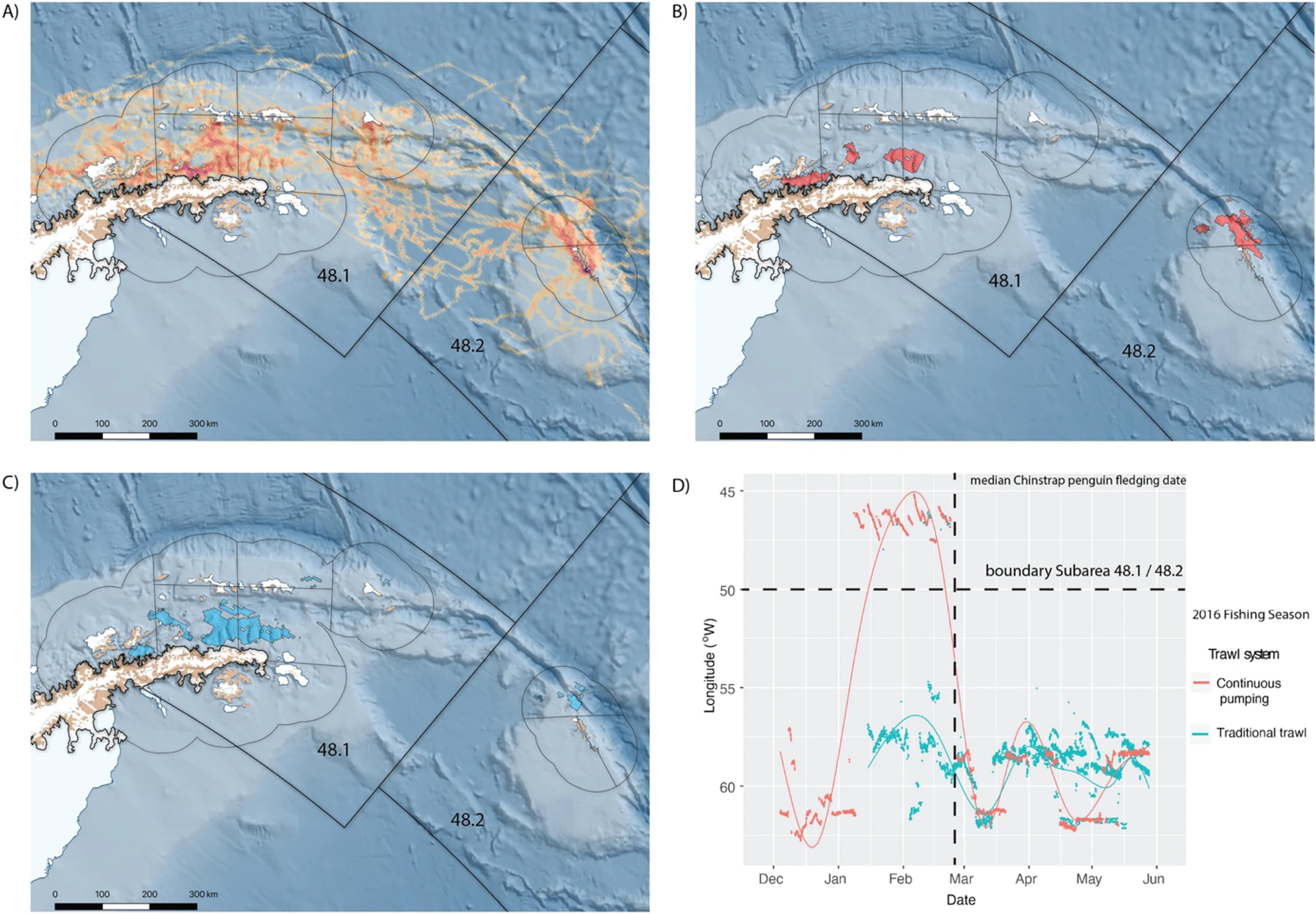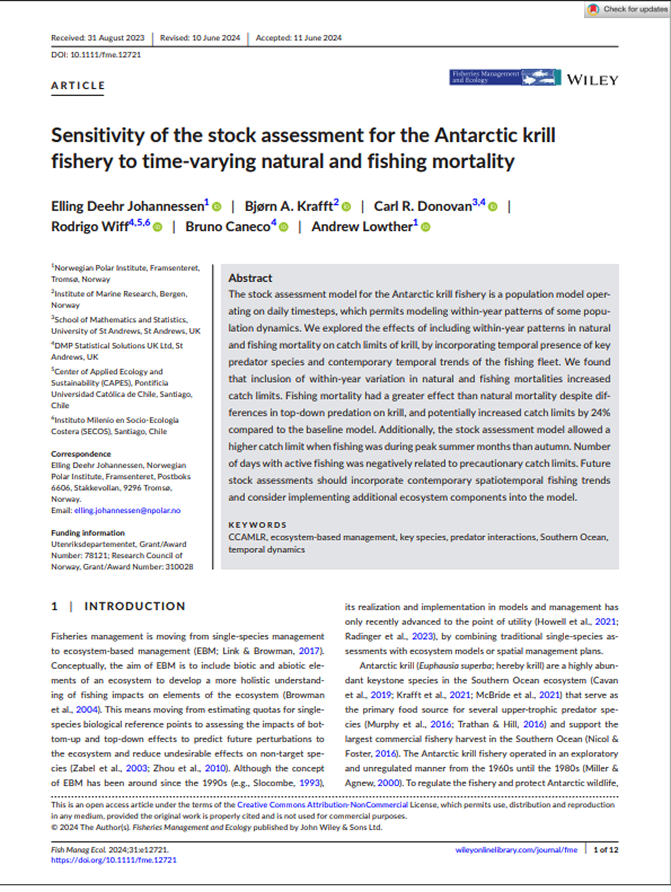Fisheries management
Antarctic ecosystem
Krill (Euphausia superba)
Male Antarctic fur seals: neglected food competitors of bioindicator species in the context of an increasing Antarctic krill fishery
Summary
This study examined how male Antarctic fur seals, krill fishing boats, and breeding chinstrap penguins use the same ocean areas and resources in Antarctic waters. Researchers found significant overlap between where male fur seals forage for food, where two different types of fishing vessels catch krill, and where penguins hunt during their breeding season when they must stay close to their chicks.Male fur seals are abundant krill-eating predators, but they are not included in the CCAMLR Ecosystem Monitoring Program that tracks other species like female seals and penguins. The study discovered that different fishing methods operate in distinct patterns across space and time, and that both seals and fishing vessels hunt at similar depths that change with the seasons. This creates a complex, overlapping competition for krill resources.The overlap is especially important during the penguin chick-rearing period, when adult penguins can only make short trips from their nests to find food for their young. The findings suggest that current fisheries management needs a more comprehensive approach that considers how multiple krill consumers—seals, fishing operations, and penguins—interact and potentially compete with each other in the Antarctic ecosystem.

1
This figure shows how male Antarctic fur seals (panel A, heatmap showing time spent in different areas) overlap with two types of krill fishing gear: continuous pumping trawlers (panel B) and traditional trawlers (panel C) in the western Antarctic Peninsula and Scotia Sea. Panel D reveals the temporal complexity, showing how continuous pumping vessels (red line) move between fishing areas throughout the season, while traditional trawlers (blue line) operate in a more concentrated pattern. The vertical dashed line marks when chinstrap penguin chicks typically leave their nests—a critical period when adult penguins are restricted to short foraging trips near breeding colonies. This overlap creates a complex competitive environment where seals, fishing vessels, and breeding penguins all depend on the same krill resources in overlapping areas and timeframes, highlighting the need for ecosystem-based fisheries management that considers multiple krill consumers. Key Findings
1
Male Antarctic fur seals show significant geographic and temporal overlap with the krill fishery 2
Male fur seals represent an abundant but unmonitored krill predator 3
Current monitoring programs focus only on breeding female fur seals and penguins 4
Different fishing gear types (continuous pumping vs. traditional trawls) showed different spatiotemporal patterns 5
The complex interaction between these predators requires a more holistic approach to fishery management 

